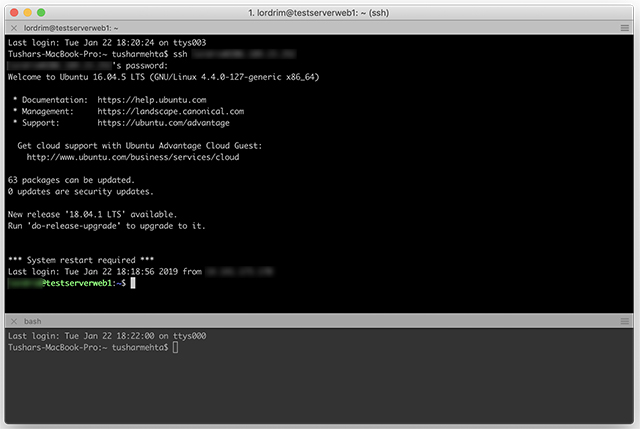
You could use TextExpander macros, but that requires you to create a new terminal first, more keystrokes. That way my eye can sense different terminals by the slight color variances as well. I also slightly change the terminal background color and the colors used in the prompt, not enough to make it garish, but enough to tint the black and change the look. # \u -> user, \W is basename, the rest are terminal \\$ ' bash_profile or whichever file configures your shell (In this case, the colloquial name is Farragut). I change the PS1 on each server to show the colloquial name, so at a glance you can see which server the terminal window represents. To activate a new terminal tab and SSH into that server, just press the shortcut key. Set the shortcut key you want to use, and input the full SSH command: ssh -R 52698:localhost:52698 -R port mapping enables me to use rmate from these terminals. I name these after the my server colloquial names (because who can remember those IT names like ). In iTerm 2 preferences, access profiles and add a new profile. You can SSH to any of your servers by pressing a single keystroke, cool huh? For example, to access my Farragut server in a new iTerm 2 tab, I press ⌃⌘F, to access Hipper, ⌃⌘H. Or really, I do this so often I needed a faster way to do this.Įnter iTerm 2 profiles with shortcut keys.


#Iterm2 ssh install#
I have a bunch of Linux boxes that I need to access via SSH, whether to install things, start or stop processes or browse log files.īut it is a pain to have to launch a new terminal window and type in the whole SSH command line: $ ssh I am that lazy.


 0 kommentar(er)
0 kommentar(er)
